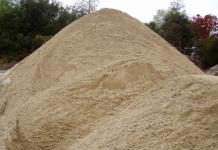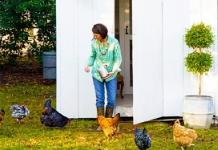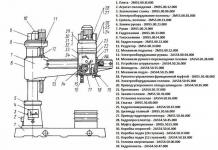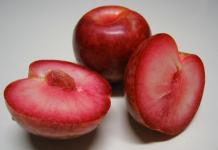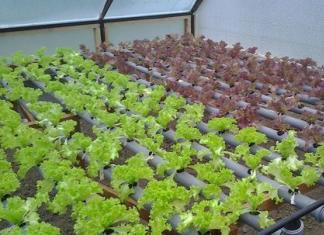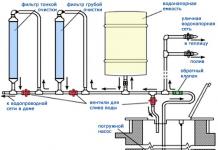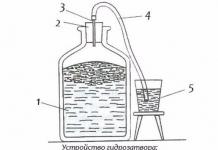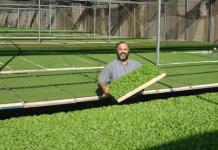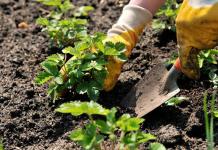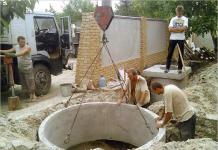The almond genus includes about forty species. It is actively grown in Mediterranean countries, China and America. Within the genus, three varieties are distinguished: sweet, bitter and thin-walled.
Of the variety of almond species in our country, only a few varieties can be grown:
- "Nikitinsky 62"- the most unpretentious and frost-resistant variety. Grows up to five meters. The foliage is large and hanging. The fruits are large, flattened, wrinkled, dark brown in color and have a sweet taste. This variety can be grown in all regions, it produces high yields and blooms in mid-spring.
- "Papershell"- withstands spring frosts. The height reaches five meters. Pleases with its flowering in March-April. The flowers are white with crimson edges. The fruits are quite large, the shell is fragile. The kernel is creamy, rough, sweet.
- "Seaside"- also tolerates frosts calmly. Grows up to three meters. The crown has a fan shape and a flattened top. The foliage is large and shiny. Blooms pink and white in mid-April. The core is elongated, pointed at the end. Ripens in November. Brings high yields.
- "Dessert"- its color buds are resistant to frost. The crown is dense, spherical. A distinctive feature of flowering is that the flowers resemble roses. Blooms in April. Fruits are oval, slightly pointed, with a soft shell. The kernel is oval, beige, with a thin skin and a sweet taste. The fruits ripen in September.
Pedunculate almonds can be attributed to the most stable and hardy species. It has medium-sized fruits that have a pleasant taste and high fertility.
This is a low shrub, characterized by branching, with shortened shoots, reaching only two meters in height. Leaves are wedge-shaped. The fruits are pointed at the top, with a slight edge and a stone with a rough plane.
Features of planting decorative almonds
This plant loves light and warmth, so it should not be planted in the shade. It is better to do this in an open, sunny area. But at the same time, the shrub is quite hardy; cases of freezing are very rare. If there is a need to replant the bush, it is better to wait until the leaves fall.
The ideal time for planting is September or October. First you need to dig a hole and add two or three buckets of manure and two hundred grams of mineral fertilizer into it. Almonds are placed at a distance of five by seven meters, but not more than ten meters.

Before planting, the root system must be treated with a clay mash, and the soil must be compacted and covered with mulch. It is not recommended to place the seedling very deep. After it has been sprinkled with soil, it is necessary to firmly fix the seedling to the stakes. It does not require high levels of soil fertility.
Of course, on fertile soils it will grow more luxurious and have strong leaves, but it also develops well on poor sandy or clay soils.
Almonds are pollinated exclusively by insects, and the main carriers of pollen are bees. Therefore, to effectively dust the shrubs and get a good harvest, it is recommended to place several hives in the garden.
How to properly care for a plant
Almonds spend a lot of useful substances on the formation and filling of fruits. Therefore, it must be fed regularly to achieve abundant flowering.
To fertilize mature trees in the spring, you can dilute manure and ammonium nitrate in water. In autumn, the plant is supported with double superphosphate and potassium sulfate. Twenty grams of each per square meter.
1. Preparation for wintering
This shrub easily tolerates frosts down to minus twenty-five degrees. Almonds can be called a hardy plant, resistant to frost, but harsh winters can cause the buds and ends of the shoots to freeze.
You can protect the bush from this by removing the buds from the tops in late July - early August. The shoots will harden and will not succumb to frost.
2. Watering
Almonds require moderate watering in loamy soils and abundant watering on sandstones. The main condition is to prevent water from accumulating near the root collar. This can lead to its rotting.
If there is not enough moisture, the shrub shortens the flowering time. Therefore, you need to pay attention to watering.

You can determine whether a plant needs moisture by examining the top layer of soil. If it has dried out a couple of centimeters, then it is necessary to water the plant. A bucket of water will be enough. Almonds love the sun and do not tolerate wind and drafts.
Pruning helps to improve the health of the bush and give the crown a neat spherical shape. This procedure promotes abundant flowering. Prune the bush after it has completely bloomed. To do this, annual shoots are pruned.
Almonds respond well to pruning. Dried and pest-affected shoots must be removed.
Reproduction
- Root shoots. It is usually obtained after extensive pruning of the bush. It is recommended to separate it after a year, when powerful roots have formed on the sprout. You can strengthen the roots by exposing a shoot of growth located in the ground and making an incision at the base. Next year the root will strengthen.
- By layering. Take elastic shoots that can be leaned against the ground. They are sprinkled with soil and left in this form until the roots grow. The shoots take a long time to take root - a year, maybe two. But if you want to get a strong bush, you need to wait until the root system strengthens.
- Green cuttings. They need to be prepared in July, then rooted in a seedling box. In the first winter, the cuttings must be insulated.
- Vaccination. For this they use plum, bird cherry, and cherry plum.
- Seeds. They are sown in spring or autumn. Annual seedlings are characterized by rapid growth. When they reach thirty centimeters, they can be planted in a permanent place.
Disease and pest control

The most dangerous insect pests of almonds:
- Leaf rollers are small butterflies that roll up leaves. Spraying them with chlorophos will help destroy them.
- The plum moth is a dangerous pest of fruit trees. The fight is similar to the leaf roller.
- Aphids are very voracious insects that have a high reproduction rate. A tincture of tobacco, yarrow, potato tops, and a concentrated solution of laundry soap will come to the rescue.
- Sapwood bark beetle. You can destroy it by whitewashing the trunk of the bush with lime with the addition of wood glue or bustilate.
Almonds are also susceptible to damage by gray rot, moniliosis and rust fungi. Gray rot can be defeated by removing damaged branches.
To cure moniliosis, plants are sprayed with a solution of copper sulfate in lime milk. The procedure is repeated every ten to twenty days. Against rust fungi, the shrub must be treated with sulfur powder.
Almond is a deciduous shrub, sometimes a small tree with simple, lanceolate leaves, serrated along the edges; with abundant and beautiful, solitary, large, white or pink flowers; fruits - roundish drupes with a pubescent pericarp and a detachable stone. Almonds bloom for 4-5 years.
Almonds are undemanding to soil, drought-resistant, light-loving, respond well to soil liming, and tolerate urban conditions. Grows quickly.
Almonds are one of those shrubs in which aging stems die off, gradually being replaced by root shoots that appear from the 3rd year of the plant’s life. At the 7th year their death begins. Therefore, it is necessary to monitor the condition of the clump; old shoots must be completely removed. Highly decorative species deserve special attention.
Types and varieties of almonds
Georgian almonds
The bush is about a meter high, has large leaves, 9 cm long, large bright pink flowers and a bristly, shaggy fruit. Georgian almonds bloom in May, the fruits ripen in September, and begin to bear fruit at the age of 7. By winter, the shoots become woody and can withstand frost quite easily.
Less frost-hardy, but quite stable in Moscow, blooms and delights with its fruits.
Ledebour almond
Grows in the foothills of Altai. The foliage is dark green and large. The flowers are pink. Flowering lasts 2 weeks. It begins to bear fruit at the age of 10.
Low almond (bean)
Grows in Central Europe, Asia and Siberia. Grows in hollows and ravines.
Deciduous shrub with a spherical crown. The branches are erect, reddish-gray, with densely covered narrow leaves. The bright pink flowers are single, bloom with leaves and adorn the bush in abundance. Flowering lasts 7 days.

Almonds are light-loving, winter-hardy, drought-resistant, undemanding to the soil, tolerate shearing well, and produce root shoots. Almonds are propagated by seeds, grafting, layering, and root suckers.
Low almonds are grown in the middle; they bloom and bear fruit profusely, as well as in the forest-steppe part of Siberia.
There are two forms: white-flowered - with white flowers; Gessler - with large pink flowers.
Common almond
Under natural conditions it is found in Western Kopetdag, the Caucasus, Iran, and Afghanistan. Lives for a century.

It grows as a shrub or small tree with reddish branches. 3 – 8 m high, resembles a cherry. The leaves become oblong after flowering. The flowers consist of a fused calyx and a red or pink corolla.
Almond Petunnikova
Petunnikov's almond grows on rocky mountain slopes, sometimes forming pure thickets.
A shrub one meter tall, with erect or spreading branches, with countless shortened branches. The shoots are light fawn, bare, the bark of the branches is gray-brown. The leaves of the Petunnikov almond are linear, with a pointed apex, bluntly or sharply serrate along the edge. The Petunnikov almond tree has pink, single branches.
Winter-hardy, drought-resistant. Decorative during flowering and fruiting.
Almond (Louisiania) triloba
Bush 3 m tall, with dark gray shoots and spreading crown. The leaves of the three-lobed almond are located on the fruiting shoots in bunches, when unfolded from the lower side they are densely hairy, then bare.

Flowers on the shoots grow in twos, of different colors - dark pink, red, crimson. The flowers are simple, 1.5 cm in diameter. The shrub blooms in early May before the leaves bloom, lasting 2.5 weeks.
Two decorative shapes :
"Captivity." Spreading bush, 2 m in height. Flowers double, pink, 10 sepals, 48 petals. Pedicel 10 mm long. It blooms in May for about 10 days. The flowers bloom after the leaves open.
"Kyiv". Bush or tree up to 3 m tall. The flowers are pink, double. It blooms very profusely at the end of April for a week, spreading a pleasant light aroma around. The flowers open before the leaves bloom.

Louisiana triloba with simple flowers is grown only in botanical gardens; flower growers practically do not have them.
Location
Almonds love sunny or partial shade. The place for planting almonds must be protected from strong winds.
Soil for almonds
The soil mixture should consist of humus, leaf soil, sand with the addition of lime.
Almond care
Almonds are positive for regular feeding. On loamy soils, watering should be moderate, on sandy soils - abundant. With a lack of moisture, the flowering time is shortened, and with stagnant water, the root collar rots. Loosening is recommended. The plant tolerates shearing and pruning well. In cold winters, almond flower buds and shoot tips freeze. If there is a large amount of snow, then the root collar may damp out.

Almond propagation
orth almonds are propagated by grafting onto sloe, plum, other almonds, and bird cherry. Almond species can be propagated by seeds. Sowing should be done in spring or autumn after stratification.
Annual seedlings grow quickly and reach 30 cm in height. They tolerate transplantation well and bear fruit in the 3rd year of life. To obtain a dense crown, the bush is formed at a young age by removing dry, faded shoots. Almonds are propagated by green and root cuttings, layering and suckers.
Usage
Flower growers need to take into account that almond is an ornamental shrub that blooms in spring. It is very beautiful when planted alone and is used to create rocky slides. Almonds planted in groups of 3-5 are effective against a background of coniferous trees, on a lawn and in a standard crop.
Ornamental almond is a beautiful and fragrant tree with soft pink or white flowers on the branches. Despite the fact that its fruits do not have beneficial properties, this shrub is grown, but for a different purpose - decorating the garden.
Decorative almonds - an excellent decoration for the site
Variety selection
When choosing almonds, rely on the following criteria:
- climatic (dry or humid climate);
- weather (frequency of rain, wind, excessive dryness);
- land quality;
- height of the garden, etc.
Even a beginner can grow decorative almonds. Compared to other shrubs, it does not require special and long-term care. The main selection criterion is the climate of the garden, because in too dry areas a tall and large tree does not adapt.
In the middle zone it is possible to grow the following almond varieties:
- three-lobed;
- Ledebura;
- steppe (bean);
- Georgian;
- Petunnikova;
- ordinary.
Low decorative almond reaches a maximum of 1.5 m. Its crown resembles the shape of a ball. The average diameter of the flowers reaches 3 cm, and their color is always bright pink.
The flowering period of the ornamental steppe shrub begins in May and lasts 7–10 days. Its advantage is resistance to low temperatures. Among the most common types, gardeners distinguish the Albiflora and Gessler varieties.
The three-lobed ornamental almond shrub grows up to 3 m. The diameter of the crown is on average 1.5–2 m. The color of the leaves is bright green, the shoots are gray. The flowers can be pale pink, crimson, fuchsia, their diameter is about 2–3 cm. The plant blooms in early May for 10–14 days. Winter hardiness is lower than that of bean, but with proper preparation for winter, damage can be avoided.
Ledebur almond grows in the middle zone on steep slopes and in steppe areas. Its height does not exceed 1.5 m, and its width is 1–2 m. Ledebur almond blooms until the leaves bloom. It has beautiful bright red buds and deep pink flowers.

Ledebur almonds perform well in the middle zone
Planting decorative almonds
Depending on the type and variety of almonds, they are planted in one of two ways: seeds or seedlings. The first method is more often used in the spring, because in the fall seeds planted in the ground can be destroyed by rodents.
Planting seedlings is very popular. It is simple and quickly brings results: the bush will begin to bloom in the second year. What you need to consider when planting almond seedlings:
- Plant at least 4 trees close together for cross-pollination. Without it, the almonds will die and will not bloom.
- Holes for planting must be at least 35 cm deep. The width of the hole depends on the volume of the seedling's root system.
- The optimal distance between plantings is 4–5 m, so that their branches do not interfere with each other.
- Almonds can be in the shade of other trees for no more than 3 hours a day.
- Strong winds can damage or destroy a tree.
- Shrubs are watered as needed, and the soil should be checked daily for dryness. In most cases, one watering per week is sufficient.
- If the seedlings are small and fragile, strengthen their base with a metal or wood support.
Ornamental almond bushes should be planted in the fall. Superphosphate fertilizers and rotted manure are added to the pit. This way the seedlings will be able to adapt to the weather and climate. After fertilization, they will survive winter frosts and bloom in the spring.
After planting, the seedlings are watered; 10–15 liters of water is enough.
Propagation of almond trees
Propagation of ornamental varieties differs from propagation of other almond bushes. Budding is used, which preserves the qualities of almonds and their fruits. It is held in mid-July. To propagate vegetatively, the gardener will need rootstocks.
How to grow seeds:
- Dig and form neat grooves 10 cm deep at a distance of 50 cm from each other.
- Plant the grains in the furrows. Maintain a distance of 10–15 cm between seeds.
- After a year, the seeds will noticeably germinate. Watch for weeds and remove them immediately.
In June, the seedlings will reach 50–65 cm in height. The branches that are located below need to be cut to 10 cm with pruning shears into a ring. By the end of July, the thickness of the base of the seedlings will be 1 cm, they can be used for propagation.
Two days before budding, it is necessary to moisten the soil so that the bark lags behind well. It is recommended to carry out budding during the cool part of the day. Optimal time intervals: early morning or after 17:00.
If several seedlings were grown, then well-developed ones with beautiful, even shoots are selected. They should have the outline of a vegetative bud.

Sprouted almond grain
Pruning almond ornamental bushes
Pruning almonds and their branches is one of the most important elements of care. The procedure promotes the development and growth of the tree. The crown of decorative almonds is already formed in the second year after planting. In subsequent years, you need to monitor its condition by determining the average height and cutting off all shoots that are lower than it with pruners.
How to form a crown from branches:
- Create several levels of skeletal branches. The first is at the very bottom of the crown. The second consists of branches that are directed perpendicular to the first. They are located 15–20 cm above the first shoots.
- The third level is formed from shoots that occupy the space between the first two. It is 10–15 cm higher. The fourth is formed in a similar way.
- The remaining shoots growing between the listed levels are cut out.
- The most beautiful, lush and wide branches are chosen.
It is necessary to inspect trees after leaf fall, winter and at the beginning of flowering. Trim dry, frostbitten, diseased, broken branches. With proper tree care, only sanitary pruning can be done.
Ornamental almond is a beautiful shrub with a large number of equal shoots with juicy dark green leaves and a huge number of flowers, which in the spring cover the entire bush with white and pink color.
This type of almond is grown in the garden as a chic hedge, although it is not uncommon for a flowering bush to be found as a single planting.
The original appearance of almonds makes them a welcome guest in any garden and farmstead. During its flowering - April and May, a huge number of delicate flowers will not leave anyone indifferent. The bush will become a true decoration of the territory.
Decorative almond.
Decorative almonds are represented by a large number of varieties and species, but the most popular among gardeners are the following:
- Georgian almond (height up to one meter, bright pink flowers, frost-resistant, flowering time - May);
- common almond (a shrub from which a tree can be formed, distinguished by a reddish tint of branches and flowers);
- three-lobed almond (subject to growing rules, it can be about three meters, a wide, voluminous crown with flowers of different shades from dark pink to red).
All of the above species are a noble decoration of the garden plot. Regardless of which of them grows in the yard, in order to obtain and preserve a full-fledged shrub, they must be properly cared for, which will require a lot of effort.
Planting at home
Growing almonds in the garden is not particularly difficult, provided that the basic requirements for planting and care are met.
The shrub needs protection from gusts of wind and drafts, and it also needs a lot of light. Therefore, planting must be carried out taking into account these conditions. The best option is the south side.
Now a few words about the soil. Almonds grow well in any soil except clay. But the formation of a beautiful crown and abundance of flowering is achieved by adding a sufficient amount of compost to the soil.

Almond planting should be done in the fall, after the bush sheds its leaves.
After choosing a location, you should prepare a planting hole thirty centimeters deep. If you plan to plant several bushes at once, then the distance between them should be at least three meters. The pit itself for planting the plant must be fertilized with compost and mineral fertilizers, and only then shrubs should be planted in it.
At home, planting almonds is possible in two ways:
- seedlings;
- bones.
The most common planting is seedlings. This method is simpler, but all young bushes require proper care.
As indicated earlier, it is necessary to prepare holes for planting at the required distance (about three meters). For pollination and fruit formation, it is better to plant almonds in at least small groups of three or five bushes.
Small drainage in the form of pebbles mixed with river sand and a little dry lime is placed in the seedling pits. Then the bush is planted, covered with soil and watered well. For stability, the bush must be tied to a support. Before the onset of winter cold, the plant will take root. Proper care during this period is to regularly water the almonds.
Planting with a bone is rarely used at home. This is quite a long process. It will take at least three to five years to get a full-fledged flowering shrub. But if you want to try, then you need to plant the seed in the ground in the spring, when the ground has warmed up well, and water it constantly, so by the beginning of autumn, seedlings should appear, which need to be protected from drafts and wind.
Care
In order for decorative almonds to fully express themselves in the garden and please the eye, they need proper care. It includes the following items:
- regular watering;
- pruning and crown formation;
- feeding
Water the plant as the soil around it dries out, about once a week; during the summer heat this can be done more often. Water for irrigation should be at room temperature and soft.
As already noted, almonds have a particularly decorative crown. Using pruning, you can not only rejuvenate the bush, but also give it original shapes.

Crown care also includes the removal of dried, damaged twigs and faded shoots.
Timely and correct pruning has a beneficial effect on the bush. Such manipulations stimulate the growth of new shoots and strengthen the plant.
The almond bush also needs timely feeding with nutrients. Unlike many other garden plants, almonds are fertilized once a year in mid-summer. To do this, use superphosphate (30 grams diluted in 10 liters of water), which is added to the roots.
Caring for almonds also includes periodically fluffing up the soil around and removing weeds.
Garden almonds are susceptible to attack by aphids, ants, and caterpillars. These pests damage leaves and buds. They need to be controlled with insecticides. They must be used according to the dosage specified in the instructions.
Reproduction
Almonds have good reproduction ability. The following methods of growing shrubs are used:
- dividing the bush;
- root growth;
- layering;
- cuttings;
- budding.
After sufficiently extensive pruning of the almond bush, a large amount of root growth forms near the bush. In the fall, you need to leave a few of these branches until next year, and cut down the rest. By next autumn, the remaining shoots will form strong roots suitable for replanting.
Layers are long and thin shoots that are bent to the ground and at the point of bud growth and sprinkled with soil. It is imperative to monitor soil moisture for rooting of cuttings. This method of reproduction takes a long time. The formation of roots and the appearance of young shoots occurs no earlier than a year later. Then you need to give the almonds time to strengthen the root system. In exactly one more year, the bush will have grown and will be ready for replanting.
Cuttings are a propagation process that must begin in July. First, cuttings with two or three nodes are prepared. Then the planting soil is prepared from two parts peat and part sand. It is in this substrate that the cuttings are planted, so that only one bud remains on the surface. After they take root, they are transplanted into soil for growing. In this case, the cuttings must be protected from wind and cold; in winter they are covered with straw or dry leaves. The coating layer must be at least fifteen centimeters.

Almond budding is carried out from late July to early August. Most often it is used in the propagation of terry almonds. For this purpose, plum trees are used as a rootstock. A young shoot with developed buds is cut off from an almond bush and all leaves are removed from it at a distance of one centimeter from the stem. The rootstock is cleaned of dirt and a special knife is used to make a cut in the bark in the shape of the letter T with a special knife slightly above the root collar. The bark needs to be slightly turned to the side. Then an oblique cut is made on the shoot obtained from the almond bush so that a little bark with a bud and wood remains on it, after which it is placed in a T-shaped cut on the plum and wrapped in bark. The cutting grafted in this way is firmly fixed with a special tape, so that the bud remains free and is left in this form until spring. For the winter, the scion is dug in with earth. With the arrival of spring, the grafted cuttings are freed from both the soil and the fixing tape.
And finally, dividing the bush. A heavily overgrown bush can be divided into parts when transplanted, while maintaining growth points in each of them.
As we can see, there are no particular difficulties either in breeding or growing almonds. Compliance with the rules and conditions of maintaining the bush will allow you to grow a healthy and beautiful plant.
Almond is a shrub, but at the same time, an amazingly beautiful plant. It does not have one trunk, the plant has many shoots and they are all of equal value. If one shoot dies, a new one grows in its place.
An almond bush can be a wonderful addition to a summer cottage. Planting and caring for it require special attention.
Almonds bloom in April or May. One cannot help but admire the beauty of the flowers of this shrub. During the flowering period, a huge number of pink or white flowers appear on each branch.
Types and varieties of this plant
There are many types of almonds. The most popular and beautiful of them will be described below:
- Georgian almond: Grows up to 1 meter in height, has large leaves, large bright pink flowers and hairy fruit. This plant begins to bear fruit at the age of seven. Flowers appear in May and fruits in September. Quite a frost-resistant shrub.
- Common almond: a very beautiful plant that grows as a shrub or small tree. The branches of such almonds have a reddish tint. The flowers consist of a fused calyx and a pink or reddish corolla.
- Three-lobed almond: such a bush can reach a height of about three meters. The three-lobed almond boasts a spreading crown and flowers of various colors (red, dark pink, crimson). Flowers grow on shoots in pairs, they reach 1.5 cm in diameter.
How to plant decorative almonds at home?

Georgian almond has large leaves, bright pink flowers and hairy fruit.
Due to their beauty, almonds are very popular among gardeners. Everyone wants to have such a beautiful shrub on their site. It should be noted that caring for this plant does not require much work. The main thing is to follow all the important rules.
Many are concerned about the question: “Where is it better to grow such a shrub?”. The answer is simple - almonds love fairly well-lit areas that are protected from drafts and strong gusts of wind. This plant does not tolerate shade well and loves the sun very much. That is why professional gardeners recommend planting such a shrub on the south side of the site. In this case, the plant will only be in the shade for two hours a day.
If we talk about soil, decorative almonds can grow on almost any soil crops. However, if you want the shrub to grow faster and have a lush and abundantly flowering crown, then it is better to plant it on compost soils. Almonds do not like clay soils.
If there is a need to replant a tree, it is better that planting occurs after the leaves have fallen. In general, it is best to plant almonds in early fall, before mid-October. This way the bush will take root faster and better. It is advisable to pour two buckets of manure and about one glass of mineral fertilizers into the planting hole.

To plant an almond seedling, you need to dig a hole about three meters deep.
There are 2 ways to plant almonds:
- seedlings;
This planting method is the simplest. It is better to dig a hole about three meters deep. It is better to plant 2-3 plants. Otherwise, the almonds will not bear fruit. The distance between seedlings should be at least three meters. Professionals do not recommend burying the seedling. After the entire procedure, the seedling must be firmly attached to the stakes.
- Bones.
In this case, landing time plays a huge role. It is better to plant seeds in spring. If you carry out this procedure in the fall, there is a high risk that the bones will be eaten by rodents.
How to care for almonds?
As mentioned above, caring for this plant does not require much time and effort. Decorative almonds need watering, pruning and rejuvenation of the crown, as well as timely application of fertilizers.
If you trim the bush on time, this will have a very beneficial effect on its appearance. The crown of such a plant will be much more beautiful and more spreading. In spring, it is necessary to remove inward, broken and dry branches. It is imperative to cut off faded shoots. In their place, other shoots will soon grow, which will begin to bloom luxuriantly next year. If desired, you can carry out formative pruning. Thanks to this procedure, you can give the plant the desired shape and a more well-groomed appearance.

It is important to feed almonds correctly and on time. This procedure should be carried out once a year, namely in July. 30 grams of superphosphate dissolved in 10 liters of water is ideal as a top dressing. The resulting liquid should be poured to the roots of the bush. This fertilizing will promote the formation of flower buds and the ripening of wood. We should also not forget about loosening the soil and controlling weeds. These procedures are best carried out in the spring and summer.
Water the almonds as the soil dries. You should not be too zealous with watering - the bush does not like an overly humid environment.
Since decorative almonds are a flowering plant, it is not surprising that they are susceptible to attacks by various pests. Aphids are very dangerous for almonds. This insect can inhibit the development of buds and greatly damage the leaves of the plant. Aphids are also scary because they secrete a special sticky substance that attracts ants. Ants, like ladybugs, can cause irreparable harm to a plant. These pests can be controlled using pesticides. Very often, during flowering, caterpillars appear on almond leaves. If you do not get rid of them in time, then there is a risk that the bush will be left without leaves. Many gardeners prefer to control caterpillars with insecticidal oil or soap.
Plant propagation
Almonds propagate in several ways:
- Root shoots;

Budding: a - one-year-old shoot with leaves, b - cuttings for budding, c - position of hands when cutting the eye, d, e, f, g - tying the inserted eye.
This method of reproduction is very convenient and simple. A large amount of root growth is formed, as a rule, after severe pruning of the plant. It is better to separate the shoots in the second year, when sufficiently strong roots have formed on it.
- layering;
In this case, flexible shoots are used that can be easily pinned to the ground. Shoots spud and leave in the ground before the formation of roots. It should be noted that almond propagation by layering is a rather long process. Often, the roots are not visible even after a year. However, if roots appear after a year, then there is no need to rush and dig up the seedling. It is better to leave it in the ground for another year. During this time, a good root system is formed, which will ensure good growth of the plant in the future.
- Green cuttings;
Green cuttings are harvested in July, after which they are rooted in seedling boxes. Cuttings should have 2-3 knots. During planting, only one knot should remain on the surface of the soil.
- By budding.
This procedure is best carried out in the second half of July or the first half of August.
What are the fruits of almonds?
Almonds boast not only a very attractive appearance of flowers, but also quite tasty fruits. The fruits of this plant consist of a green, inedible pericarp and a seed (nut). It is these bones that are known for their rich and healthy composition.

The light-loving almond plant tolerates heat, comparative drought, and frost (but not more than 25 degrees).
- Almonds contain a lot of vitamin E and B, which have a positive effect on the appearance and condition of hair and nails;
- An oil is made from the fruits of almonds, which perfectly softens the skin;
- It has long been proven that such nuts cleanse the blood and calm the nervous system;
- The nuts of this plant boast a high content of proteins and fats;
- Many experiments have shown that almond seeds increase potency and also remove bile;
- In addition, one cannot help but note the fact that these fruits stimulate brain function. That is why such nuts are recommended for people who are constantly engaged in mental work.
Almond fruits ripen in August or September. During this period they are collected. It is not difficult to distinguish a ripened fruit from an unripe one - the outer shell of a ripened nut cracks and dries out. If the bush does not exceed two meters in height, then the fruits can be collected from it by hand. And if the tree is more than two meters high, then they simply shake it and collect the precious fruits.
Despite the large number of positive properties of the fruits of this shrub, they cannot be consumed by everyone and not always.
Basically, unripe nuts contain hydrocyanic acid, which is very harmful to the body.
You must be very careful when using this product. Almond seeds often cause an allergic reaction in humans. If unpleasant symptoms appear after eating such nuts, you should stop using them further.
In addition, this product contains quite a lot of calories (609 Kcal per 100 g). That is why it is better for people suffering from excess weight to give it up.
It should be noted that it is better to consume almonds raw. There will be no benefit from roasted nuts.



